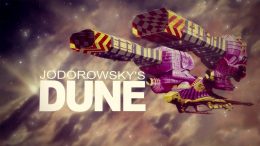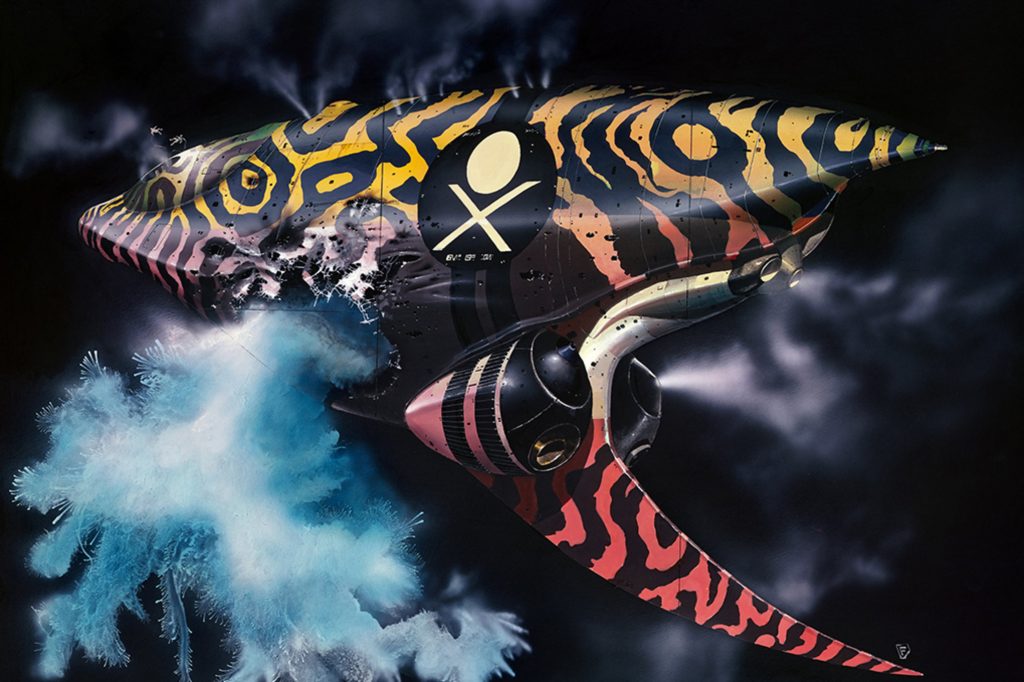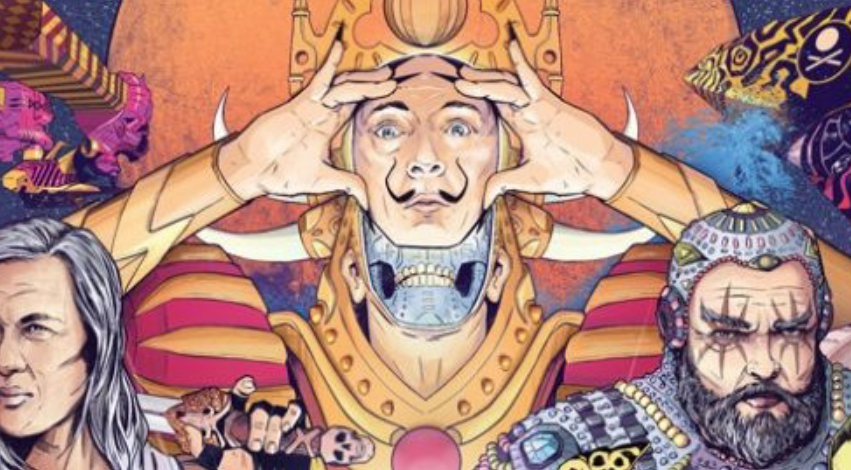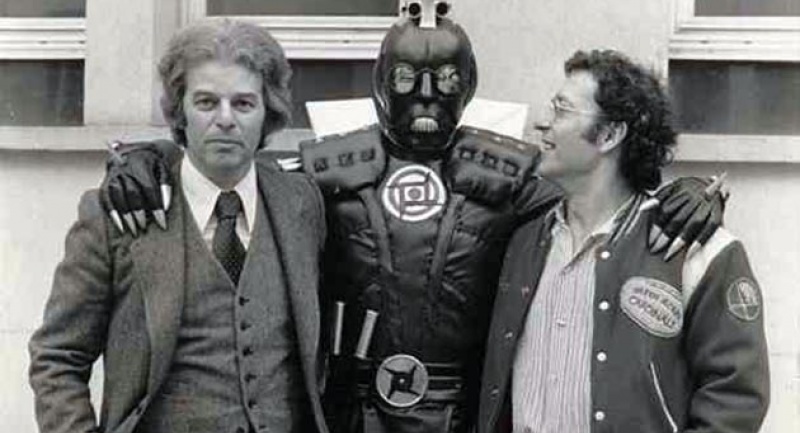Jodorowsky’s Dune
Posted By Trevor Lynch On In North American New Right | Comments DisabledJodorowsky’s Dune, Frank Pavich’s 2013 documentary, tells the story of the “greatest movie never made,” Alejandro Jodorowsky’s abortive adaptation of Frank Herbert’s Dune. Jodorowsky is a Chilean-born Jewish filmmaker and author of graphic novels and books on spirituality, psychology, magic, and divination. I have reviewed his The Dance of Reality [2] at Counter-Currents.
In 1974, after the successes of his psychedelic cult films El Topo and The Holy Mountain, Jodorowsky and his friend Michel Seydoux decided upon an adaptation of Dune and began assembling an amazing cast and creative team.
To help create the world of Dune, including designs for sets and costumes, Jodorowsky brought in French cartoonist/graphic novelist Jean Giraud (Moebius), English science fiction illustrator Chris Foss, and Swiss surrealist painter H. R. Giger. To realize their designs, he hired Dan O’Bannon to do special effects. For music, Jodorowski settled on Pink Floyd, with Magma to provide the music of the Harkonnens.
Jodorowski’s casting decisions were equally inspired. Salvador Dalí was to play Emperor Shaddam IV. Dalí wanted to be the best paid actor in the world. It was agreed he would be paid $100,000 per minute — but not for minutes worked, for minutes on the screen. Dalí also suggested plot elements and set designs, right down to the emperor’s toilet. At one point, he asked for a flaming giraffe, which was duly inked into the storyboards by Moebius. Clearly, Dalí was perfect for the role of a megalomaniac. Dalí ‘s muse Amanda Lear was to play Shaddam’s daughter Princess Irulan.
For the Harkonnens, Orson Welles was to play Baron Harkonnen; Mick Jagger was cast as Feyd-Rautha; and Udo Kier was to play Piter De Vries.
David Carradine was cast as Duke Leto Atreides, and Jodorowski’s son Brontis was to play Paul.
Although not mentioned in the film, Gloria Swanson was also cast, perhaps as Reverend Mother Mohiam.
Apparently Jodorowsky had not even read Dune before suggesting the project. He simply had second-hand reports about a science fiction epic involving a mind-expanding drug and the coming of a messiah. But he wanted to suggest a highly ambitious project, and Dune popped into his head. Later, when he read the book, he came to regard it highly, “like great literature,” comparing Herbert to Proust.
Jodorowsky decided to make Dune into a vehicle for his own LSD-fueled version of Vedanta, much like his classic The Holy Mountain. Thus, his vision departed from the novel in crucial ways. Like David Lynch after him, he wanted to emphasize the genuinely magical and messianic elements of Herbert’s more ambiguous story. He wanted to make a movie that would give people a unitative mystical experience analogous to a psychedelic trip. His goal was to create something sacred, and he treated his creative team like a band of spiritual warriors.
In Jodorowsky’s telling, Duke Leto has been castrated in a bullfight, and Paul is conceived by Bene Gesserit magic from a drop of his blood. This plot device later appeared in Jodorowsky’s graphic novel The Metabarons. Leto is also tortured and dismembered by Piter De Vries in a scene resembling the Passion of the Christ.
But the most shocking departure is that Paul Atreides dies at the end, his throat slashed by a minor character, Margot Fenring. But Paul cannot really die, for he has transcended his ego and become one with the cosmos. Death simply cuts his final tie with individuality and ego. Jordorowksy’s dramatization of this apotheosis is brilliant: everyone begins to speak with Paul’s voice. “I am Paul. “I am Paul.”
Then, in a miracle far outshining Lynch’s rainstorm on Arrakis, the planet too is awakened. It transforms itself into a verdant paradise and begins moving through the galaxy, seeding it with cosmic consciousness. Naturally, none of Herbert’s sequels would have been possible. It is not known what Frank Herbert thought of this ending, but he did have a good working relationship with Jodorowsky. In the documentary, Jodorowsky likens his adaptation to rape — but with love.
The first draft of Jodorowsky’s Dune — the script, the storyboards by Moebius, plus paintings by Foss and Giger — were pulled together into the legendary Dune Book, as thick as a major city’s telephone directory. If there were ever a project for Taschen to publish, this is it.
Copies of the Dune Book were sent to all the major Hollywood studios, including Disney. But nobody wanted to finance a 14-hour movie. So after two years of intensive creative work, the project was canceled.
But the Dune Book, like the traveling planet, was still out there, passing from hand to hand, fertilizing the imaginations of many moviemakers to come. As Brontis Jodorowsky points out, when you watch many movies you hear the voice, “I am Dune.” “I am Dune.”
For instance, Dan O’Bannon wrote a script and brought together Giger, Moebius, and Foss to make Alien. The original Star Wars trilogy owes much to Dune, specifically to Jodorowsky’s Dune. The documentary points out borrowings in The Terminator, Raiders of the Lost Ark, Masters of the Universe, Contact, and Prometheus. I think a case could be made for borrowings in Akira. Clearly there were also subtle borrowings — let us call them homages — in Lynch’s Dune, including a glimpse of a fat face and open mouth on the Harkonnen planet that quotes Giger’s original design for the Baron’s Castle. If only Lynch had used more.
Pavich’s documentary is highly entertaining, and I recommend it without reservations. Pavich interviews Jodorowsky — whose charisma is undimmed even in old age — and as many of the surviving participants as possible. But my favorite sequences were simple slide-show animations of the storyboards. Jodorowsky, of course, went on to produce multiple films and graphic novels. But it is a pity he never revisited Dune, for he already had the makings of a brilliant animated series. Quick, somebody translate this review into Japanese.




